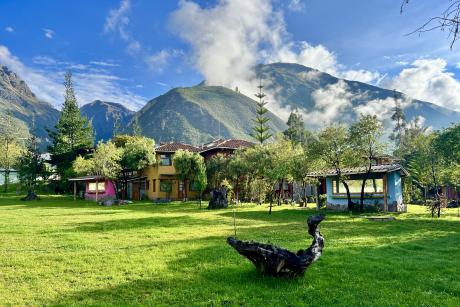By Carolina Solis
After being here in Nicaragua for 10 months, I am finally getting around to posting in my blog. Please forgive me for the tardiness. It has been a wonderful experience down here with regards to the hospital, my research and just experiencing the culture. Just to give you a little bit of background about myself and what I am doing here, I am a Duke Surgery Resident and Global Health Fellow doing one of my research years here. I am looking at factors influencing late presentations in patients undergoing emergency abdominal surgery as well as following post-operative outcomes. I will talk more about my project in the next post. Although, I have had a lot of good adventures working on this particular project, I thought I would start my blog, albeit late, with a recent “experience” that provides a flavor of what it has been like to live here.
It all started one Saturday morning when I went to HEODRA, the public hospital in León, to cover for my data collection nurse. For some reason, this particular morning on rounds there was a lot of talk about pigs. Pigs, being a common animal in Nicaragua, are eaten in all sorts of forms: pork rinds, vigoron (a dish consisting of yuca salad and pork rinds), nacatamal (a giant tamal with vegetables and usually pork). So when I heard this talk about pigs, I figured the residents where discussing some sort of feast involving pork.
However, when the resident asked me if I was participating, I thought it would be wise to inquire further. It turned out that the residents would be having a pig lab to practice laparoscopic techniques, specifically laparoscopic cholecystectomy.
One of the differences that I have seen between my surgical experience here in HEODRA and the experience back at Duke is that there are not a lot of general surgery cases that are performed laparoscopically. While at Duke, most of the cholecystectomies and appendectomies are performed through very tiny incisions and the use of laparoscopic instruments, here, at HEODRA, most of these are performed in the traditional open fashion. As a result, this pig lab is one of the general surgery residents’ first experience in performing laparoscopic surgery. Although there is an effort to perform laparoscopic procedures, there are still many limitations in terms of equipment acquiring the necessary skills.
In any case, after hearing about this opportunity to operate on pigs, I immediately jumped at the opportunity. I was quickly informed that in order to participate, I needed to buy a pig! I figured, “why not?” and decided that I would proceed. Now the question became, where to buy a pig. However, this was not an issue at all. One of the residents identified a nurse at the hospital who sold pigs, and we went to her house to obtain my pig. This is how I acquired “Princesa.” You see, she came with a name…I promise that this was not my doing.
The residents were in charge of organizing the entire simulation session, which I greatly commend them for doing-everything from buying the anesthesia, to transporting equipment to the vet school where the procedures were to be performed to buying the pigs. The pig lab went on for 3 days, in which we operated on a total of 13 pigs. Mine was the last. They were anesthetized, brought into the OR, prepped and draped and all of them had their gallbladders removed.
After this experience, I figured I would sell my pig as many of the other residents said they would. However, I was not able to sell her in the week before I had to fly to Cuba for a surgical congress. As a result, I now am the proud owner of a pig. I have figured out what she likes to eat (wheat) and that she likes to be petted. I pay for her to be kept at the vet school where we operated on our pigs. After discussion with family and friends, I have grown affectionate towards my little patient and have decided that I would like to donate her for her to be reproduced instead of having her end up as pork rinds.
In addition to learning how to take care of a pig, I have learned a lot from this field experience. Usually, when we have this type of experience in the U.S., everything is already organized for us. As I mentioned previously, the residents had to set everything up themselves. This experience definitely taught me everything involved in getting things set up from scratch -- from buying the pig to transporting the carbon dioxide tank from the hospital to the vet school. Additionally, since this laparoscopic training session, a couple of short term surgical teams have come down and performed more laparoscopic cholecystectomies with the residents. Overall, I have noticed more of them being performed. I hope that this is a trend that continues.



